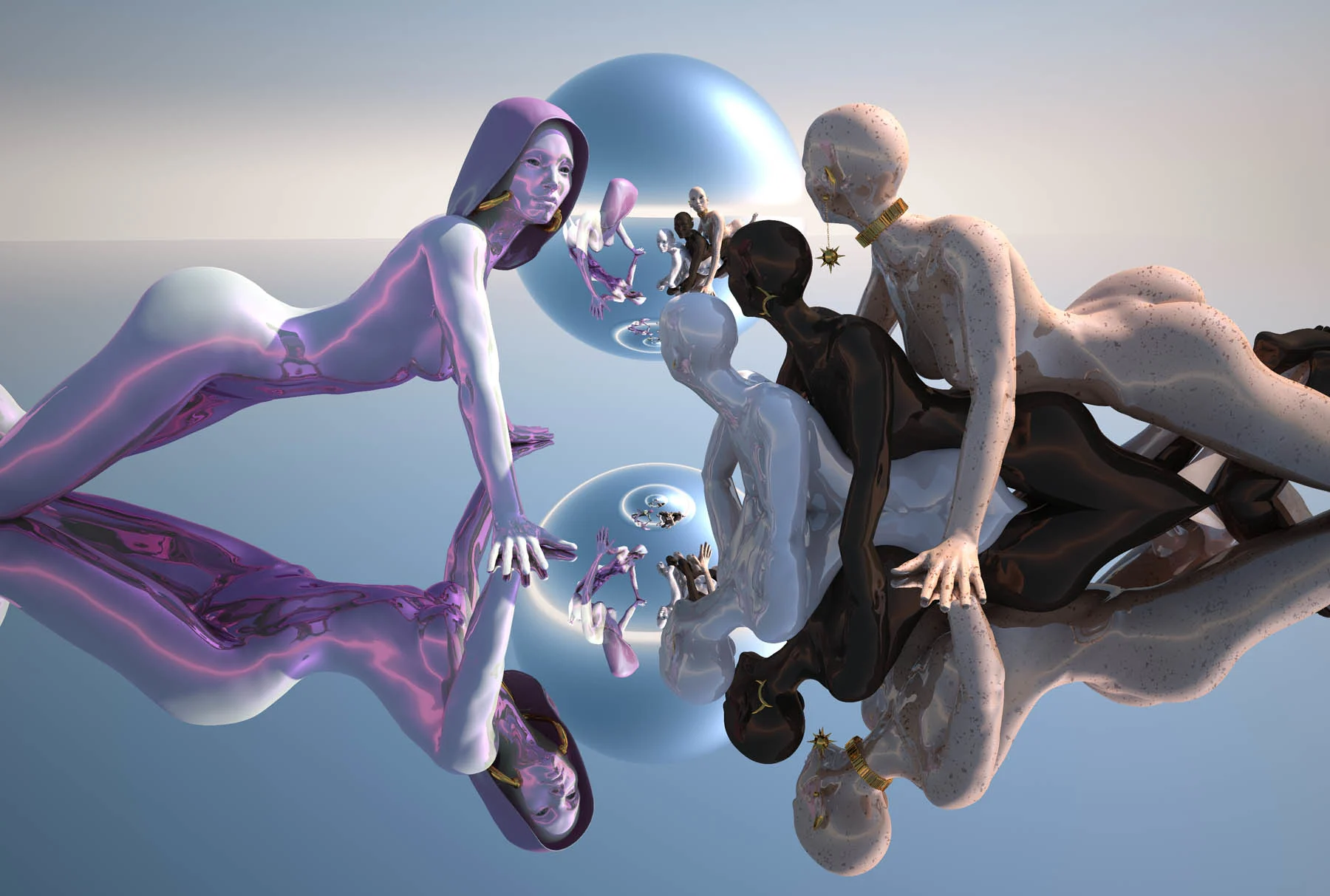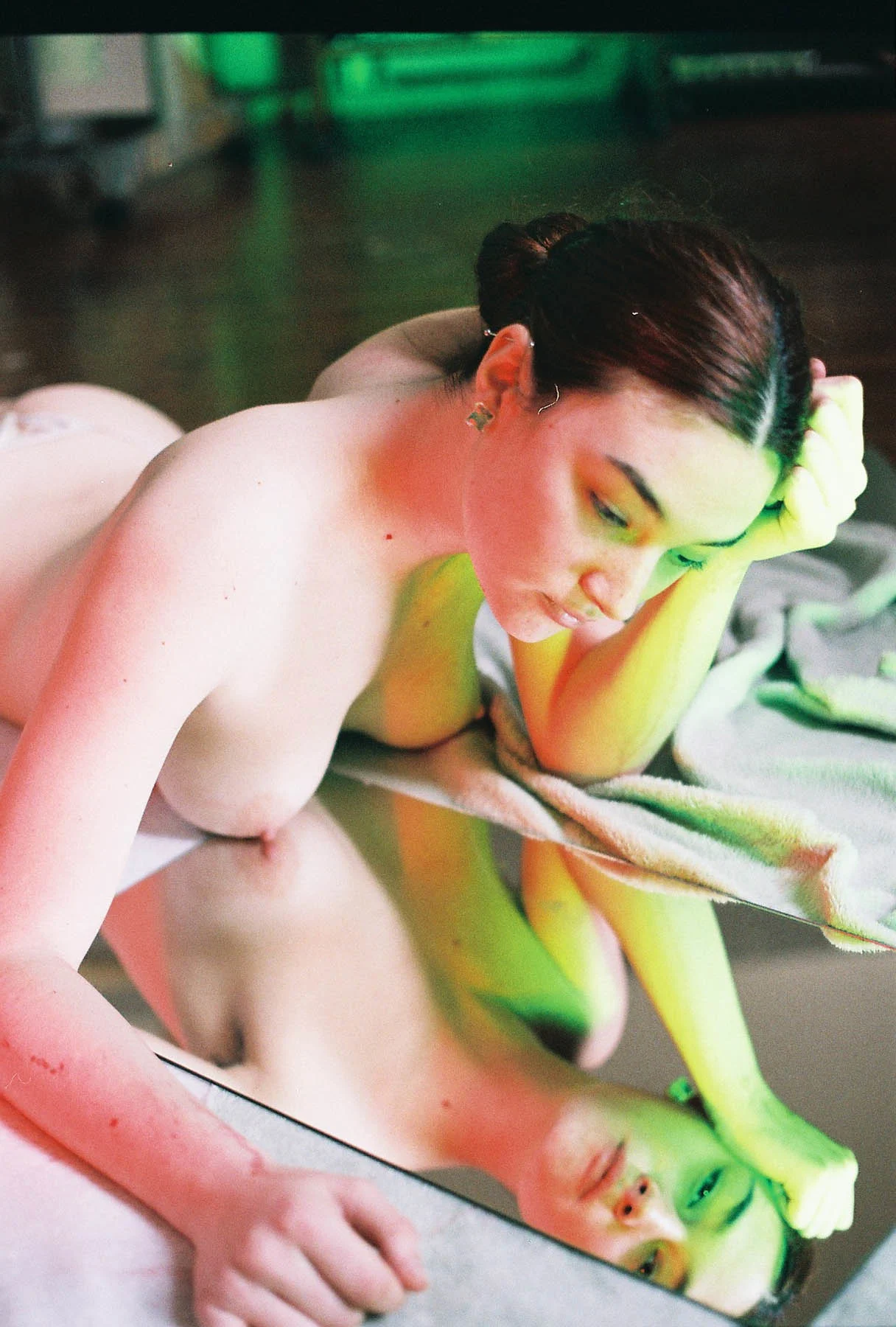

For a decade, Argentinian photographer Hef Prentice has been taking dreamlike photos of the women around her, and more recently, those women have inspired her to create fictional characters with the power of CGI. The similarities between her real subjects and her digital ones are striking, and here she tells Emma Firth that—whichever of her media she’s using—her practice is centered around capturing the power and vulnerability of the female form, and her belief that “there is something divine in women.”
It’s been years since I thought about this person. The leading lady in Luc Besson’s underrated noughties sci-fi romance, “Angel-A” (think “It’s a Wonderful Life” meets “Blade Runner.”) A mercurial femme fatale, Angelica, and a guardian angel with actual wings, with no recollection of her previous earthly identity; a celestial presence who is both seductive and sweet, fragile and resilient, emotionally open yet harboring her own hidden sadness. When confronted with Hef Prentice’s female characters, in both photographic and CGI-rendered scenes, I see her.
“I love that film!” The Argentinian artist lights up at the comparison, today speaking from her sun-drenched studio in Buenos Aires. “I love her [Angelica’s] irreverence and determination, this portrait of a strong and seemingly beautiful woman who also has fears and fights [working] against them.”
The 29-year-old has long been drawn to capturing the power and vulnerability of the female form (“there is something divine in women”), specifically nude, partly as a response to being disturbed by how much discomfort the naked body awakens. Seen as something “forbidden,” to be embarrassed by, or shameful of.


Almost a decade ago she started shooting on camera, working mostly with friends or “close individuals.” Here, trust and intimacy come naturally. It’s a considered, mindful, practice: “I take my time between each shot,” she says. “I bring only one or two rolls of film to each photo shoot. I limit the possibilities, which makes me more aware of each capture.” First, she’ll “discuss ideas with them and pose in specific positions, so that the model can imitate what I show them through my own actions.” She’s currently enrolled at the Da Vinci School, studying digital sculpture, and a similar process occurs when developing her CGI characters. Initially planning poses in front of the mirror, moving her arms, lifting her hair and letting it fall, looking into her eyes; thinking about how she’s feeling at that moment.
“Then, I go to the computer (she doesn’t take selfies, but rather draws from memory) and start with the eyes.” The gaze, she says, is the most important aspect. Why? “Because despite being computer-generated characters, they are created by a human being. I want to reflect my soul in their gaze.” Whether that’s an intense longing, firmly fixated on the eyes of another before kissing; or a mermaid-esque figure’s laser green stare, looking out into some unknown, infinite distance.

In one dreamlike and raw photo series shot on 35mm film, “Flowers,” she captures a young woman, naked in the bath, surrounded by lilies, the model’s gaze looking directly, and curiously, at the camera. “In a way, it becomes a form of performance, where the real model or the CGI character bring to life the characters from my imagination,” Prentice explains. “Sometimes they embody strong women, heroines, sensuous dreamers, mythological goddesses, or women from my dreams.”
“What is she thinking?” This is the first question Hef always asks herself before she creates an avatar. “My goal is to convey intense emotions—what my characters think, what they feel…to awaken the viewer's imagination.”
In Hef’s virtual reality, the past and present co-exist. “I drew inspiration from the figure of Lilith [for Sita Abellan’s jewelry brand Lilith by Sita] from Hebrew mythology,” she says, by way of example. “She represents the first woman created, who rebels against divine orders and refuses to be submissive. She is also associated with lust and is feared by men; that’s why I created this strong character that conveys power and sensuality.”


Collaborating with a designer, bringing to digital life someone’s vision, makes complete sense. Fashion has been a consistent point of fascination—a playful extension of selfhood—over the years, and it was in creating AI models she felt she could really push the aesthetic boundaries. “The freedom and possibilities of creating in the digital world are extraordinary,” she explains. “Digital avatars represent the future of fashion, much like photography and fashion films were at one point. I don't believe they compete; they’re simply new and innovative elements that are emerging.”
“Americana Exotica” is the pinnacle of the romantic tapestries Prentice can create digitally—a vivid fantasyscape featuring a group of otherworldly female figures with cyborg features, in repose surrounded by lush nature. It’s a fairy-tale, if it were set in the year 2100.
Fairy tales have captivated her since childhood, ever since her father gifted her the Latin American version of “The Children's Encyclopaedia.” Devouring Harry Clarke’s darkly poetic illustrations in Hans Christian Anderson’s short stories, discovered in its “Fantastic Narrations” section. Far from the Disney-fied versions so many of us are familiar with on-screen, see “The Little Mermaid,” these original stories were far darker, more surreal and tinged with tragedy. Hef is fascinated by this duality; the poetry of darkness. Drawing influences from everything from vampiric fiction (Bram Stoker’s “Dracula”) to horror cinema (Dario Argento’s movies). “The darkness is so feared,” she says, before adding hopefully “…but it’s where light can always be found.”




